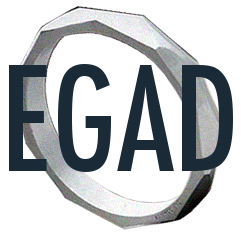Assessment Mapping
![]()
Assessment mapping is a process that focuses attention on where students have the opportunity to demonstrate, through the assessment opportunities provided, the knowledge and skills they’ve been developing. The process provides an opportunity to see the variety of ways that students are being asked to demonstrate the engineering graduate attributes and if the full breadth of indicators are being touched upon.
Curriculum Alignment Maps
![]()
Alignment maps are opportunities to plot instructional and assessment methods against the graduate attributes or indictors and course learning outcomes to ensure that each element of each course contributes to and supports the specified intentions for learning. This is the most comprehensive of the mapping processes and can be well-supported through a variety of commercially available programs such as CurriKitâ„¢.
For each course in a given program, identify:
- the grad attributes that are supported
- indicate whether attributes are:
- taught and assessed
- taught but not assessed
- not taught and not assessed
- not taught but assessed
- (this happens more often than one might think – one prime example is communication. Communication is often an implicit expectation in a course and students’ reports, presentations etc are assessed though no instruction in communication is included as part of the course curriculum)
- the instructional methods that are used
- the assessment tools used to assess each attribute
- the level of complexity expected (refer to Bloom’s, ICE, and novice/expert literature)
- total grades available/week
[expand title=”Learning Activity:”]Using what you’ve learned about the various types of mapping possibilities, create a list of items you might choose to include to collect data on as you prepare to map your program(s) curriculum.  Consider a rationale for including each piece of data in terms of its potential to inform curriculum improvement.
[/expand]
Suggestions are offered on what to include as you map your program and is supplemented by a detailed PowerPoint presentation, created by Peter Wolf at the University of Guelph.
![]()
Something to consider Consider inviting student leaders from each program year to complete the ITU survey and contrast the results with those that were faculty-generated.
